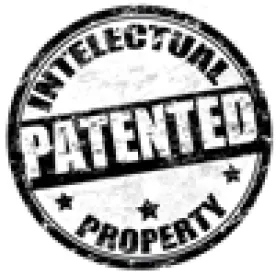In its Final Written Decision, the Board found that the challenged claims (1, 7, and 13) of the ’037 Patent are unpatentable. The ’037 Patent describes a “method for sensing both hard and soft obstructions for a moveable panel such as a sunroof.”
The Board began with claim construction. Because the ’037 Patent has expired, the Board construes the claims similar to that of a district court, using the standard articulated in Phillips v. AWH Corp., 415 F.3d 1303, 1316, 1327 (Fed. Cir. 2005) (en banc). Over Patent Owner’s objections, the Board adopted the constructions from its Decision on Institution. The Board then construed additional terms. The Board first reviewed the term “different parameter values.” The Board construed it to mean its plain meaning, which included both parties’ proposed constructions. The Board then reviewed the term “a power system.” Patent Owner contended that “power system” must include a “frame,” “drive motor,” and “closure.” However, the Board agreed with Petitioner that because “frame,” “closure,” and “driver motor” are separately recited in claims 1 and 7, it would be redundant to read them into the “power system.” Therefore, the Board construed “power system” in accordance with its plain meaning. The Board also declined to adopt Patent Owner’s definition of “de-activating” because it was not consistent with the specification, and declined to adopt Patent Owner’s definition of “sensing a value of the parameter” because Patent Owner did not provide sufficient evidence of disavowal in the prosecution history that would limit the plain meaning of the term.
The Board next reviewed Petitioner’s challenges to claims 7 and 13 as anticipated by Bernard. Patent Owner argued that Bernard does not disclose “different parameter values,” a “power system,” and a “frame.” The Board noted that because Patent Owner’s constructions were not adopted, Bernard discloses the features as construed by the Board.
The Board then reviewed Petitioner’s ground that claim 1 is rendered obvious over Bernard and Chikaraishi. Once again, Patent Owner’s arguments depended upon its construction of the claim terms. Because the Board did not adopt those constructions, it found that claim 1 is obvious.
The Board then addressed additional arguments. First, Patent Owner contended that Petitioner’s expert did not have personal experience with the state of the art at the time of filing and is not an expert in the field. However, the Board was persuaded otherwise. Patent Owner also argued that Bernard and Chikaraishi are not enabling. The Board found that Patent Owner only provided evidence of poor performance, not lack of enablement, and that they were sufficiently enabled as to the obviousness ground. Finally, the Board found that both parties’ motions to exclude were moot because the Board did not rely upon any of that evidence.
Webasto Roof Systems, Inc. v. UUSI, LLC, IPR2014-00649
Paper 34: Final Written Decision
Dated: October 13, 2015
Patent 7,548,037 B2
Before: Glenn J. Perry, Hyun J. Jung, and Jason J. Chung
Written by: Jung
Related Proceedings: UUSI, LLC v. Robert Bosch LLC, No. 2:13-cv-10444 (E.D. Mich.); UUSI, LLC v. Webasto Roof Sys., Inc., No. 2:13-cv-11704 (E.D. Mich.); IPR2014-00416; IPR2014-00417; IPR2014-00648; IPR2014-00650



 />i
/>i

